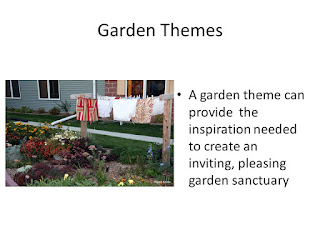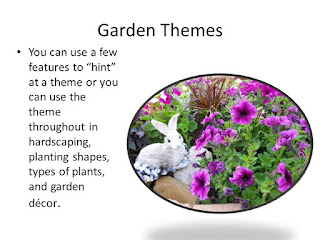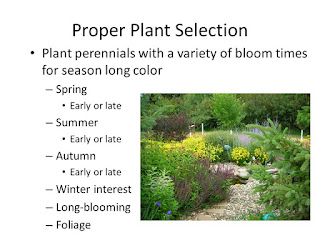Wow. Dry, hot, windy, and salty? Is there any bigger recipe for garden disaster than that? Yet, many people who live along boulevards or roadways where streets get cleared and snow and road debris gets dumped in their space deal with this every spring. What to do? Spread rocks and thumb your nose at the mess? Now, I don't have anything against rocks (unless it's called mulch, but that's for another article), but we can do better than that.
I will add one disclaimer here - different cities have different rules for boulevards, so before you start your project, make sure you know exactly what you are allowed to plant in the area.
While no living plant can survive having its crown buried in road debris for the long term, there are a number of grasses, perennials, and shrubs that are somewhat forgiving of the hot, dry, windy, salty conditions often prevalent in those locations. While the ones named below are not the only options, they are plants that I know to be tough as nails and bred to do well in our zone 4, rather inhospitable climate.
Most lawn grasses do not do well in hot, dry, and salty conditions, but there are some beautiful ornamental grasses that are more forgiving.
 |
| Panicum virgatum "Heavy Metal" switchgrass (internet photo) |
It is a warm season grass with lacy, reddish purple seed heads that form in late summer. Bright green summer foliage turns a lovely bright yellow in autumn. It does spread by rhizome, but has not been pesty in my yard.
 |
| Miscanthus "Purpurascens" (internet photo) |
Miscanthus, or Maiden grass also becomes quite drought tolerant once it is fully established and tolerates almost any soil conditions we have to offer. Miscanthus "Purpurascens" is hardy to zone 3 and there are other varieties which, while classed as zone 5, have proven to be somewhat hardier than that, but it can be hit and miss. Purpurascens forms an upright clump of dark green leaves, which turn flame orange and then bronze in the fall. The tall spikes of soft-pink flowers turn into soft, silvery plumes, which stay on the plant for winter interest.
 |
| Big Bluestem (internet photo) |
Little Bluestem's scientific name is Schizachyrium scoparium. It is in the same family as Big Bluestem, but not the same species. Little Bluestem is very ornamental, with nice, finely textured foliage that forms dense mounds at about two to three feet tall. It has the same blue-green summer color as Big Bluestem, and in the fall it turns a deep mahogany red with shiny, white seed tufts.
 |
| Schizachyrium scoparium summer color (left) and autumn color (right) (internet photo) |
 One of my favorites is daylilies (Hemorocallis). They are tough and beautiful and come in such an amazing variety of colors, sizes, and even shapes, that it is hard not to find one that you love. Daylily varieties come in one of three types of foliage: dormant, semi-evergreen, or evergreen. For tough conditions in the northern climates, the dormant foliage type is the hardiest. All of them have hearty, grass-like green foliage that make a nice, flowing statement in your garden beds. You can choose a number of varieties with different bloom times, to give you flowers through much of the summer; or you can choose re-blooming varieties such as Stella d'Oro, Purple d'Oro, Rosy Returns, Happy Returns, or many other that will give you blossoms throughout much of the growing season, with just a little bit of deadheading time.
One of my favorites is daylilies (Hemorocallis). They are tough and beautiful and come in such an amazing variety of colors, sizes, and even shapes, that it is hard not to find one that you love. Daylily varieties come in one of three types of foliage: dormant, semi-evergreen, or evergreen. For tough conditions in the northern climates, the dormant foliage type is the hardiest. All of them have hearty, grass-like green foliage that make a nice, flowing statement in your garden beds. You can choose a number of varieties with different bloom times, to give you flowers through much of the summer; or you can choose re-blooming varieties such as Stella d'Oro, Purple d'Oro, Rosy Returns, Happy Returns, or many other that will give you blossoms throughout much of the growing season, with just a little bit of deadheading time. |
| Paeonia "Sarah Bernhardt" |

Perovskia (Russian Sage) is a woody perennial that seems to thrive in the poorest of conditions and often languishes and struggles if treated too well. It's gray-green leaves and lavender to deep purple flowers add a nice touch to plantings with denser, spikier leaves, such as daylilies. Russian sage is much loved by bees and butterflies both, and there are a number of varieties available to provide a size for nearly every location.
 |
| Nepeta "Kitten Around" (internet photo) |
 |
| Salvia "Sensation Rose" (internet photo) |
Salvia (Garden Sage) is another similar looking plant to Nepeta and Perovskia, but tends to have a smaller growth habit, staying at about 18 to 24 inches tall. Blossoms appear in mid to late spring in variations of purple, rose, and white. May Night and Sensation Rose are two popular varieties here. The downside of this plant is its relatively short bloom time and inconsistency of rebloom, even with hard pruning after initial flowering. It also has a tendency to "collapse" mid-season and leave you with a large, gaping hole in the middle, while the stems of your salvia have fallen over to cover everything around it. I will often times walk out to the garden and see the salvia covered with bees and butterflies, so I am willing to keep some of it around to draw them to the yard.
 |
| Coreopsis verticillata "Zagreb" (internet photo) |
Well, it seems like that's enough purple for now! Let's take a look at some lovely yellows for these tough locations. One of my favorites is Coreopsis verticillata, commonly known by the names Threadleaf coreopsis or Tickseed. This is another plant that is tolerant of nearly anything our garden spots might decide to dish out. The ferny foliage of Coreopsis verticillata is a nice textural difference for the straplike foliage of daylilies, or the coarser texture of the sages and nepetas.
 |
| Solidaog "Little Lemon" (internet photo) |
Solidago, or Goldenrod, is a native plant to the prairie regions. Or, at least some of them are native. And, I can tell you from personal experience that those native solidago are probably not the plants you want to put in your garden. They spread voraciously by rhizome and make every great effort to take over the world! They also do not like to die for any reason, including from exposure to most herbicides available to the home gardener. That said, there are some "tamed" varieties that make lovely additions to the garden, especially if one wants to attract pollinators. Their lovely yellow or gold colored flowers are highly attractive to bees and butterflies in late fall when many of the other pollinator favored plants have finished their blooming for the year. Little Lemon and Fireworks are two varieties that I have found to be pretty well-behaved in my garden.
 |
| Asclepias tuberosa (internet photo) |
 |
| Armeria (internet photo) |
 |
| Achillea (photo from Bluestone Perennials catalog) |
 |
| Echinops "Veitch's Blue" (internet photo) |
For a great structure plant, Echinops (Globe Thistle) is one of my favorites. It doesn't necessarily have the colorful blooms of a lot of other plants, but it adds interest with its spiny foliage and blue or white spiky, sphere-shaped flower heads. It is a perfect pollinator plant, and its seeds are also much loved by many birds.
 |
| Xenox sedum (internet photo) |
 |
| Viburnum "Blue Muffin" in bloom on left; berries on right (Wilson Bros. photo) |
Viburnums produce masses of white blooms in late spring. Height and overall size is dependent on the variety, and can range from just a few feet tall to eight or more feet. The scent of their flowers is attractive to birds, insects, and people. Arrowwood is the hardiest variety, but virtually all varieties are hardy to zone 4. Mohican, with its huge white snowball flowers, and Blue Muffin, with its bright blue berries after flowering, are winners in my yard.
 |
| Rugosa rose "Roseraie De L'Hay" |
Rugosa roses are tough cookies. Their native habitat is on sand dunes along the coasts, so as long as it's a variety hardy to zone 4 or lower, it will do well in our climate in these tough spots. Rugosa roses usually are quite thorny shrubs with lots of deeply-veined leaves. The flowers are large and may be single or fully double. Rugosa flowers are shades of pink to white, and they are highly fragrant, so this rose will attract bees, butterflies, birds, and other wildlife to your garden. They also have a long bloom season and will reliably re-bloom if the hips are kept trimmed off. If flowers are left to turn to hips from about mid-August on, deer, pheasants, and other wildlife will enjoy them in the winter.
 |
| Potentilla "Pink Beauty" |
Finally, let's talk about Potentilla, or gas station shrubs, as some people like to call them. It's not an accident you often see these planted in those little islands between gas pumps or along the perimeter of parking lots. Potentilla are as tough as they come. Potentillas are members of the rose family, and are sometimes called bush cinquefoil. They are small, growing anywhere from one foot to four feet tall and wide. Flowers come in yellow, white, pink, and orange. Dakota Goldrush and Dakota Sunspot are two varieties that were developed at North Dakota State University specifically for the conditions of North Dakota growing. They obviously do well in northern climates, but so do many other varieties, such as Abbotswood, Goldfinger, and Pink Beauty. These shrubs are easy care and bloom almost the entire growing season.
Given this wide selection of grasses, perennials, and shrubs, there isn't really any reason to fight the battle to keep lawn grass alive in those tough areas, or to resign yourself to just looking out at a patch of rocks. With the right type, color, and texture choices, you can have a beautiful, hardy garden, even in those hot, dry, windy, and salty locations.






















































